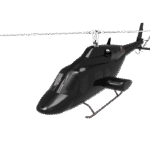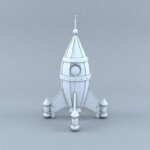Navigation of Micro World: Tight tolerant technology in precise CNC machining
In the ruthless pursuit of mechanical perfection, microns (one thousandth of a thousandth) determine success or failure, Accurate CNC machining Appears as an indispensable cornerstone. It is the art and science that always create complex components that conform to strict dimensions and geometric specifications – often specified tolerability is thinner than human hair. For performance, safety and reliability, the industry is not negotiable, aerospace, medical implants, high-performance automotive, energy, optics and advanced robotics – mastering close tolerance is not only an advantage; it is fundamentally necessary.
Why "tolerant" More than just a number
Tolerance defines the allowable variation of the specified dimension. Tight tolerance – Think ±0.05mm (±0.002") or in a truly demanding field, ±0.005mm (±0.0002") Even less – greatly reduces the allowed changes. The meaning is profound:
- Improve performance and efficiency: The gears are seamlessly meshed, the bearings run with minimal friction, and the fluid seals operate perfectly, resulting in optimized power transmission, reduced energy consumption and quieter operation.
- Improved reliability and lifespan: Minimizing wear due to precise fit can significantly extend component life and reduce expensive failures.
- Improved assembly and interchangeability: Made parts are predictably reliable and reliably blended together, simplifying assembly and easy to replace.
- Enable complex designs: The micro-functions, complex profiles and demanding surface surfaces required by cutting-edge technology are absolutely dependent on tight tolerance machining.
Achieve micro level: accurate pillars
Provided parts within these razor edges is always a symphony of technology, process control and expertise. This is what separates capable processing from real precision:
-
Advanced machine tools and rigidity:
- High-precision CNC center: The machine must have excellent geometric accuracy, minimal thermal growth and special location repeatability. Speeding frames and components suppress vibrations – surface finishes and dimensional accuracy. Think of Swiss-style lathes and high-end 4 axles, then 5-axis machining center.
- Complex feedback system: Linear scales (measured directly on the axis) and high-resolution encoder provide closed-loop feedback, allowing the control system to make slight real-time corrections for real-time corrections far exceeding the capabilities of traditional open-loop systems.
- Thermal stability: Precision processing environments are usually temperature controlled (±1°C variance). The machine may combine linear motor cooling, spindle cooler units and thermal compensation software that continually adjust the smaller size shift caused by the motor, friction or cutting itself. Granite surface panels used for metrology further minimize thermal impact in quality control.
-
Cutting-edge tool and process optimization:
- Micron-scale cutting tools: Only the highest quality tools with extremely sharp, wear-resistant cutting edges (usually coated carbides, diamonds or CBN) and perfect balance. The beating must be carefully reduced.
- Adaptive processing: Advanced CAM software with adaptive tool paths continuously adjusts feed rate and cut depth based on material engagement. This maintains a constant chip load, minimizes tool deflection, reduces heat generation and enhances accuracy and surface effect.
- Strategic Tool Path Plan: Using techniques such as high-speed machining (HSM) with low radial engagement and high axial depth cutting can optimize surface integrity and reduce deflection. Trochoidal milling strategies are also very effective for complex pockets and demanding materials.
- Microarrangement function: For special features that require micron accuracy, dedicated micro mills, micro drills and specialized processes (such as micro EDMs) may be required.
-
Unrivaled metrology and process control:
- Process Detection: High-precision touch probes integrated into CNC machines enable process measurements. Can automatically detect key dimensions of parts period Processing cycles allow real-time adjustments and reduce waste after complete treatment.
- Post-processing CMM check: The state-of-the-art coordinate measuring machine (CMM) equipped with Renishaw probes or laser scanners provides a comprehensive, traceable 3D measurement report (usually ISO 2768 standard) that verifies that the part complies with all GD&T out indicators.
- Surface finish measurement: The introduction instrument and surface roughness tester quantifies key parameters such as RA (arithmic mean) or RZ (average roughness depth) to ensure that functional requirements are met.
- Statistical Process Control (SPC): Continuous monitoring of measured dimensions allows manufacturers to predict potential drifts and actively adjust the process before the parts are out of tolerances.
- Material mastery and processing:
- Understanding the complex material behavior – including the reactions of different alloys, plastics or composites to cutting forces, heat and pressure relief – is crucial. During the fixing and processing, factors such as the direction of the grain and the inherent stress of the blank must be considered.
- Stable workers: Vacuum chuck, dedicated precision effects with minimal distortion and custom fixtures designed for minimal pressure and maximum repeatability are essential for immovable parts without the need to introduce distortion.
Great Advantages: Your Companion Precision
Achieve consistent, auditable tightly tolerant machining requires not only advanced equipment; it requires deep expertise, strict process discipline, and a strong commitment to quality. Great Standing at the forefront of this demanding field.
As a professional Five-axis CNC processing manufacturerWe have the comprehensive features you need to conquer your most challenging precise requirements:
- Cutting-edge five-axis technology: Our advanced five-axis machining centers provide unparalleled flexibility and precision. Complex geometry is required, complex angles and composite curves are often impossible to use fewer axes, machining in a single setup. This criticism "Single Settings" Capacity is critical to tight tolerances, eliminating cumulative errors introduced by repositioning parts.
- Overall manufacturing solution: In addition to main processing, we also professionally solve your entire metal parts manufacturing problem. Our comprehensive One-stop post-processing and completion service – Includes specialized heat treatment (annealing, hardening, tempering), precision grinding, matching, polishing, electroplating, anodizing and painting – seamless integration. This ensures that the downstream process never compromises the hard hole accuracy achieved during the CNC machining process.
- Material versatility and expertise: We use a wide range of processable materials confidently – from exotic aerospace alloys and hardened tool steels to medical grade titanium, engineering plastics and more. We understand their nuances and adopt optimized machining strategies accordingly.
- Agility meets accuracy: We combine advanced features with agile methods. Most materials can be customized and processed Thanks to optimized workflows, expert CAM programming and active production planning.
Conclusion: Accuracy is not accidental, it is designed
The demand for smaller, lighter and higher performing components continues to drive the boundaries of manufacturing. Mastering strict tolerances CNC machining is not only about hitting stricter numbers. It’s about a systematic, technology-oriented and professional approach that permeates every step of the process. From the cornerstone of the machine’s stiffness and thermal control to the choice of nanotips, from advanced process validation to meticulous final metrology, realizing and holding microns requires no compromise on excellence.
For projects where a degree or micron score determines operational integrity and success, working with a dedicated precision manufacturer is not an option; it is a priority. Great Take advantage of its advanced Five-axis CNC machining Features, coupled with deep engineering understanding and robust process control, turn the most demanding design into high-precision reality for perfect execution. We invite you to experience the engineering precise differences.
Customize your critical precision parts now at the best prices! Contact Greatlight now for a quote (Replace with the actual CTA link)
FAQ: Precision CNC machining and tight tolerances
-
Q: What is considered "Tight" Tolerances in CNC machining?
- one: "Tight" is relative, but usually refers to a typical machining function with a tolerance significantly smaller than that. Common benchmarks include ±0.05mm (±0.002") and below. Tolerance ±0.012mm (±0.0005") or fewer people are considered very close/super precise. Greglight usually handles requirements within ±0.005mm (±0.0002") and the following depend on feature size and geometry.
-
Q: Which CNC machines are most suitable for compaction work?
- one: Designing for precise machines is crucial. Key features include high stiffness structure, thermal stability systems, linear scales (direct measurements), accurate ball screws/linear motors and ultra-low vibration spindles. Swiss-type small rotating parts excel excel. High-end 4-axis, especially 5-axis machining center It is critical for complex geometry that needs to avoid multiple settings, as each setting introduces potential errors.
-
Q: Can all materials be processed into tight tolerances?
- one: Although many materials can achieve accuracy, the achievable tolerances depend to a large extent on the inherent properties of the material. Stable low-expanding materials (e.g., some aluminum alloys, infar, certain steels) and easy-to-process plastics are generally more suitable. Materials that are prone to warping, internal stresses (such as certain tool steels), high forging or fiber/grained structures (certain composites) are more challenging and require expert technology. Greatlight works with a huge portfolio of materials and provides the most suitable choice for your tolerant needs.
-
Q: How does Greatlight make sure the parts meet my nervous tolerance specifications?
- one: We use a multi-layer approach:
- Advanced equipment: Leverages state-of-the-art 5-axis machining center with closed-loop feedback and thermal control.
- Process control: Strict tool selection, adaptive machining strategies, highly stable labor and environmental controls.
- Metrics: Temporary verification and final inspection of calibrated NIST traceability standards (e.g., ISO 17025) were calibrated using high-precision CMM and surface detectors.
- Expertise: Highly skilled mechanics, programmers and quality engineers oversee each step.
- one: We use a multi-layer approach:
-
Q: Single Setting: Why is it so important for tight tolerances?
- one: Whenever the part is removed and repositioned in the fixture ("second"), slight deviations are introduced due to fixation tolerance, fixture force and manual adjustment. Complex parts may require multiple setups on a 3-axis machine. Five-axis machining It is usually possible to process the entire part in a single fixture. This eliminates cumulative errors in multiple settings, thereby significantly improving overall accuracy and geometric consistency.
-
Q: How do you compensate for thermal expansion during processing?
- one: The formation includes ambient temperature control, using machines with integrated thermal compensation algorithms, managing coolant temperature (sometimes refrigerated), selecting heat-reducing emission cutting parameters and using "soak" Before the key functions are completed. Greatlight uses a combination of passive (environment) and active (machine software/chiller) controls to manage thermal effects.
- Q: What surface finish can you expect from stressful tolerant processing?
- one: Achieving tight tolerances is often associated with excellent finishes. Although tolerance and surface roughness (RA) are different specifications, accuracy technology minimizes vibration and tool marking. With optimized parameters and potential subsequent finishes (ringing, polishing), RA 0.2 µM (8 microns) or more RA surface finishes can be achieved, depending on material and characteristic requirements.

















